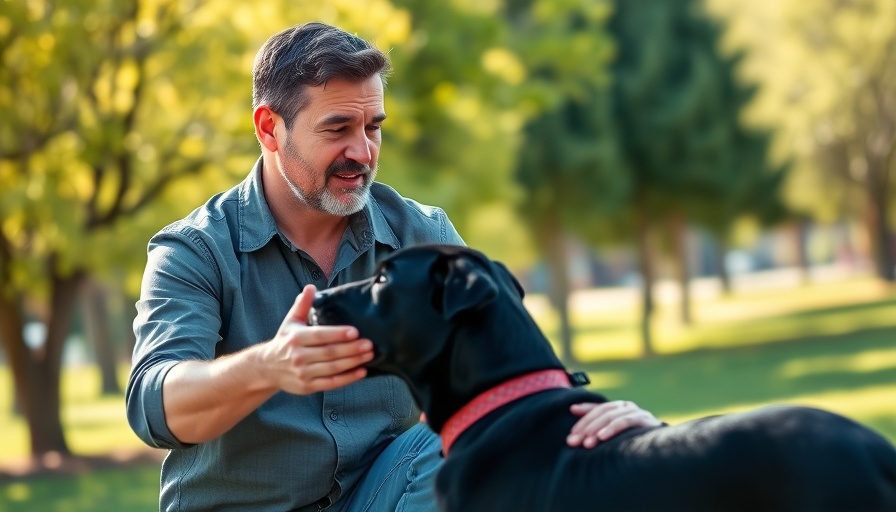
Understanding Your Dog's Behavior: The Communication Gap
Have you ever wondered why your furry friend seems to ignore your commands? It's a scenario every dog owner has encountered, leaving many frustrated and questioning their training techniques. While it might feel like your dog is just being stubborn or disobedient, the truth often lies in the communication gap between you and your pet. Understanding this concept is crucial for fostering a better relationship with your dog.
In 'The No. 1 Reason Your Dog Doesn't Listen To You,' the discussion dives into dog behavior, exploring key insights that sparked deeper analysis on our end.
Empathy: The Foundation of Dog Training
The first step in resolving communication issues with your dog is to empathize with their perspective. Dogs experience the world differently than humans. Their senses are heightened, and their understanding of communication often relies more on body language than vocal cues. A dog may not respond to a command if they’re distracted by a new scent or visual stimulation. Instead of viewing their behavior as disobedience, approach the training process with empathy. This shift in perspective allows for a more productive training experience.
The Role of Consistency in Training
Consistency is key when it comes to training your dog effectively. Just as human children thrive in structured environments, dogs respond best when commands are given in the same manner consistently. Use the same words, gestures, and tone each time you communicate. Furthermore, reinforcing positive behavior with treats and praise can encourage your dog to listen to you. This technique not only builds trust but also creates a clear understanding of expectations on both sides.
Socialization: Important for a Well-Behaved Dog
Socializing your dog is another critical factor in ensuring they listen to you. A well-socialized dog is more likely to be confident and calm in various situations, which translates to better listening and responsiveness. Engaging your dog in different environments—such as parks, doggy events, or training classes—can help acclimate them to new sounds, sights, and behaviors. Additionally, this exposure allows your dog to learn from other dogs, enhancing their communication skills.
Analyzing Distractions: Setting Your Dog Up for Success
Consider your surroundings when initiating training sessions. Are there distractions, like other people, pets, or even noises, that might impede your dog's ability to listen? Minimize these distractions to create a conducive learning environment. Start training in quieter spaces, gradually increasing the level of distractions as your dog becomes more adept at following commands. This gradual exposure helps them learn to focus better over time.
Professional Insights: What Veterinarians Say
Veterinarians often emphasize the importance of understanding a dog's health in relation to their behavior. For example, if a dog is in pain or feeling unwell, they may be less likely to respond to training cues. Regular vet visits ensure that your dog is healthy and that their behavior is not influenced by underlying health issues. Keeping your pet’s health in check is a crucial part of effective training and pet care.
Overcoming Misconceptions: Debunking Training Myths
There are numerous misconceptions surrounding pet training. A common myth is that dogs are inherently disobedient or that they simply don’t want to listen. In truth, dogs often misinterpret cues due to environmental factors or inconsistent signals from their owners. By dismantling these myths, you can approach training with love, patience, and understanding, which ultimately leads to better results.
Final Thoughts: Building a Stronger Bond with Your Dog
Understanding the reasons behind your dog's behavior is essential to mastering effective communication and training. By empathizing with your dog, remaining consistent in your commands, socializing them appropriately, and considering their health, you'll find that they are much more responsive to your cues. A strong, trusting relationship built on mutual understanding will not only improve behavior but also enhance your bond with your furry companion. Remember, training is a journey and with love and patience, you and your dog can achieve remarkable results.
 Add Row
Add Row  Add
Add 




Write A Comment